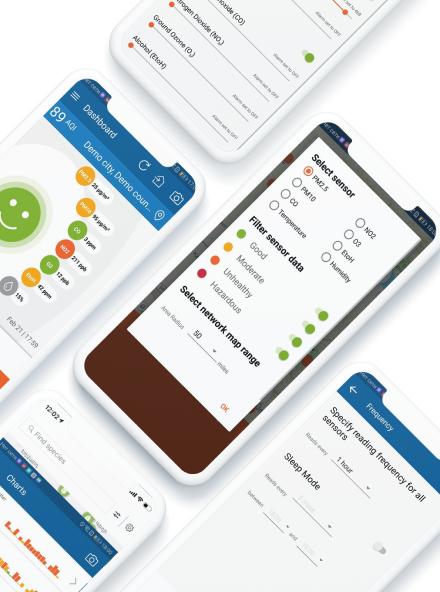
Mastering Azure's Well-Architected Framework for Cloud Success
25 Apr 2024

The Microsoft Azure Well-Architected Framework (WAF) is a targeted design, aimed at improving the quality of the workload across several architectural excellence characteristics, which comprise the five main pillars of the Azure WAF framework.
The five pillars and their corresponding workload improvements are as follows:
1. Reliability: The objective here is for the workload to be resilient, available, and recoverable.
2. Security: It’s of crucial importance to achieve the maximum necessary security level for the workload.
3. Cost Optimization: The ROI (return on investment) of the workload should be enhanced.
4. Operational Excellence: This pillar ensures responsible development and operations.
5. Performance Efficiency: This entails the accomplishment of the workload purpose, while keeping the initially set timeframes.
The Azure Well-Architected Framework, driving the architectural excellence on the fundamental level, is set for the success of each and any workload deployment on Azure. Thus, the broad guidance provided by Microsoft, also encompassing the general Azure Cloud Adoption Framework, can be applied to any specific scenario or customer project. In this regard, our advanced engineering team at VOLO has mastered the customer onboarding and implementation processes according to both the Azure Well-Architected Framework and the Azure Cloud Adoption Framework.Azure Well-Architected Framework: Unveiling the Pillars
To detail more on how exactly the Azure WAF is an effective guiding tool, it should be highlighted that the framework provides a list of recommended best practices for the workload concerns under each of the five pillars, while evidently addressing the risk considerations and tradeoffs as well.
Let’s briefly examine each pillar to uncover the main principles that should be applied by the engineering team, once the workload deployment process starts.

Reliability
A reliable workload must serve the set functionality, overcoming the potential outages or malfunctions, which otherwise would be a serious concern and problem for the business operations. This said, a reliable workload should be available, resilient, and recoverable. Consequently, as Azure Well-Architected Framework states in the reliability pillar, the architecture set by the engineering team should be designed for business requirements, for recovery, for resilience, and for operations.
The Azure WAF has a dozen of very specific recommendations that can be leveraged for a reliable workload. To list a few, simple and efficient design, identification of critical flows, failure mode analysis, target metrics, high-availability multi region design, scaling, and more.
Security
The CIA triad - confidentiality, integrity, and availability is incorporated in the Azure Well-Architected Framework’s secure workload, with a zero-trust approach. The Azure WAF poses several critical questions on the security of a given workload, and thus urges for planning security readiness. In the case of the security pillar, again, design considerations should be made: design to protect confidentiality, design to protect integrity, and design to protect availability.
The importance of the security of the workload is hard to overestimate. It is recommended to establish a security baseline and a secure development lifecycle, while also implementing threat analysis, data classification, identity and access management, network controls, encryption, and many more action items.
Cost Optimization
Return on investment and financial constraints are the main two cost-related aspects that are well-addressed by the Azure WAF. Azure Well-Architected Framework urges for the development of cost-management structures that would be designed with a cost-efficiency mindset, usage and rate optimization.
The Azure WAF further equips the teams with a toolset to monitor and optimize the cloud costs over time as well.
Again, there are several clearly and precisely tailored recommendations to consider, such as creating a culture of financial responsibility, modeling, collecting and reviewing cost data, optimizing rates, and many more.
Operational Excellence
Operational excellence, according to the Azure Well-Architected framework, is achieved once the DevOps culture and practices are embraced and the workloads follow standardized workflows, minimizing process variance, human error, and disruptions. Furthermore, the development standards, efficient automations, operations with observability, and safe deployment practices are proposed in the activities of this pillar.
Azure WAF recommends formalizing routine/non-routine tasks, taking action to improve build velocity, applying CI/CD and Infrastructure-as-code, designing and creating a monitoring system, and more.
Performance Efficiency
It is objectively expected for an efficient workload to adjust according to changes of the many input conditions and demands. According to this Azure WAF pillar, setting realistic performance targets is the baseline for achieving the performance efficiency. Furthermore, the architecture design should accommodate to meet capacity requirements, and achieve and sustain performance.
The achieved efficiency can and should be improved and boosted through optimization activities. Azure WAF provides detailed recommendations on the definition of the mentioned performance targets and capacity, on scaling and partitioning, on performance testing, on optimizing operational tasks, and many more.
Microsoft Azure Well-Architected Framework: Expectations and Outcomes
As we explore the Azure Well-Architected Framework’s pillars, a question arises: what can be expected, once the Azure Well-Architected Framework is applied, of course, by knowledgeable engineers?
- The absolute success of the implementation, based on the extensively covered concepts, driving well-informed decisions.
- Seamless and confident process of progressing through stages: from initial assessments (also provided by the Azure WAF) to actual workload deployments.
- Expert understanding and further mitigation of existing or arising tradeoffs and risks.
- Ability to optimize over the course of time, constantly evaluating the progress and maturity of the workload, simultaneously ensuring that the architecture is efficient and the objectives set by the business are met.

Parting Thoughts
Numerous action items and recommendations were listed under each pillar. Nonetheless, a distinguished professional team, which has expertise with Azure Well-Architected Framework implementations, is the main prerequisite for leveraging all of the mentioned benefits through the framework’s guidelines.
To further evaluate and take advantage of the potential benefits of applying the Azure Well-Architected Framework to your business case, existing or potential workloads, do not hesitate to contact us. Our team will be happy to help you navigate the waters of Azure WAF and make the most of its features.
More helpful resources:
- Microsoft Azure vs. AWS vs. Google Cloud: Which One to Choose?
- 7 Benefits of Azure Cloud Migration from On-Premises Data Centers
- How to Streamline the Process of Migration to the Cloud?
- Top 10 Cloud Migration Challenges and How to Overcome Them?
- A Guide to Successful Migration to the Cloud: Benefits, Approaches, and Best Practices



